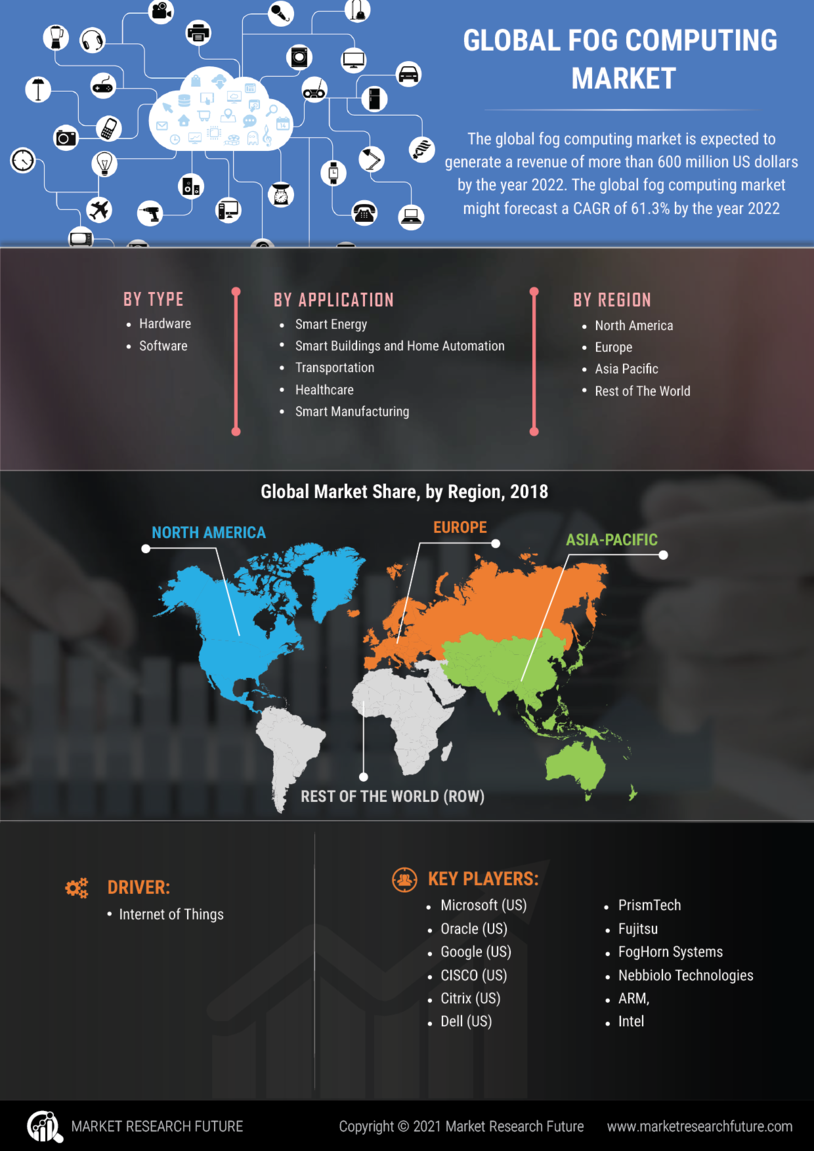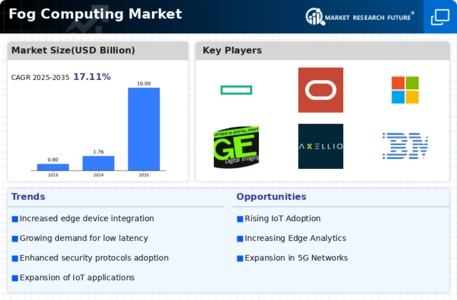Growth of Edge Computing Solutions
The growth of edge computing solutions is a critical driver for the Fog Computing Market. As organizations seek to optimize their IT infrastructure, edge computing has emerged as a viable alternative to traditional cloud computing. By processing data at the edge of the network, organizations can reduce bandwidth costs and improve response times. The edge computing market is anticipated to reach approximately $15 billion by 2025, indicating a robust demand for fog computing technologies that complement these solutions. This synergy between edge computing and fog computing is likely to propel the Fog Computing Market forward, as businesses increasingly recognize the benefits of decentralized data processing.
Expansion of Smart Cities Initiatives
The expansion of smart cities initiatives is significantly influencing the Fog Computing Market. As urban areas increasingly adopt smart technologies, the need for efficient data management and processing becomes paramount. Fog computing facilitates the integration of various smart city applications, such as traffic management, waste management, and public safety systems. By enabling localized data processing, fog computing reduces latency and enhances the responsiveness of these applications. Reports indicate that investments in smart city projects are expected to exceed $1 trillion by 2025, underscoring the potential for fog computing solutions to thrive within this burgeoning market.
Advancements in Network Infrastructure
Advancements in network infrastructure are propelling the Fog Computing Market forward. The proliferation of 5G technology and enhanced connectivity options are enabling faster data transmission and improved network reliability. These advancements facilitate the deployment of fog computing solutions, which require robust network capabilities to function effectively. As 5G networks become more widespread, the potential for fog computing applications in various sectors, including automotive and telecommunications, is expected to expand. Industry analysts predict that the global 5G market will reach $700 billion by 2025, highlighting the opportunities for growth within the Fog Computing Market as organizations leverage these advancements.
Increased Focus on Data Privacy Regulations
The increased focus on data privacy regulations is shaping the Fog Computing Market. With the implementation of stringent data protection laws, organizations are compelled to adopt solutions that ensure compliance while maintaining operational efficiency. Fog computing offers a decentralized approach to data management, allowing organizations to process sensitive information closer to the source, thereby enhancing data security. As regulatory frameworks continue to evolve, the demand for fog computing solutions that prioritize data privacy is expected to rise. This trend is likely to drive innovation and investment in the Fog Computing Market, as businesses seek to navigate the complexities of compliance.
Rising Demand for Real-Time Data Processing
The increasing need for real-time data processing is a pivotal driver in the Fog Computing Market. Organizations are increasingly reliant on timely data analytics to make informed decisions. This trend is particularly evident in sectors such as manufacturing and healthcare, where immediate data insights can enhance operational efficiency and patient outcomes. According to recent estimates, the demand for real-time data processing solutions is projected to grow at a compound annual growth rate of over 25% in the coming years. Fog computing, with its ability to process data closer to the source, plays a crucial role in meeting this demand, thereby driving growth in the Fog Computing Market.


















Leave a Comment